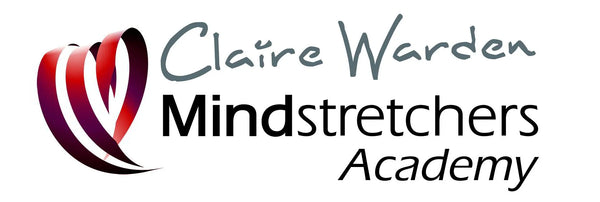Planning with Floorbooks® — 7 Common Mistakes (and Better Alternatives)
Dr Claire WardenMany practitioners, when they start with The Floorbook Approach®, they do so with enthusiasm. But as with all things in life they encounter challenges that prevent them from reaching the full potential of this methodology.
After supporting hundreds of settings and thousands of practitioners across the world, we’ve seen consistent patterns of how people go wrong with Floorbooks®.
Fortunately these mistakes are simple to correct with only small tweaks.
Mistake #1: Documenting Everything
The Problem: Recording every comment children make during play. This creates dense pages dense with thoughts and quotes about every single detail of their day. From lunch preferences and friendship conflicts, to random observations about shoelaces or ceiling tiles.
Why It Fails: When everything is documented, nothing stands out. Children can't identify compelling ideas because they're buried in excessive recording. The Floorbook® becomes overwhelming rather than inspiring.
Better Approach: Document selectively for original thoughts and curiosity. Listen for moments when children lean in with interest, ask thoughtful questions, or make unexpected connections.
Mistake #2: Translating Children's Language
The Problem: “Fixing” children's thoughts and quotes into correct English terminology. (Writing "Child explored texture and temperature" instead of "It's all squishy and cold and makes my fingers wrinkly.")
Why It Fails: Translation loses children's actual voice and thinking. Children don't recognise their own contributions when it’s been redrafted by an adult.
Better Approach: Write children's exact words – we call this Verbatim Documentation. Preserve their original language. When a child says mud feels "like chocolate pudding but not for eating," this captures sophisticated thinking expressed in perfectly child-appropriate language.
Mistake #3: Using Floorbooks® for Evidence Collection Rather Than Planning
The Problem: Using Floorbooks® to capture observations and examples of work to use for compliance purposes, but not using it to inform your planning.
Why It Fails: When Floorbooks® become records of evidence rather than planning tools, they lose the power of collaboration. Children's interests don't influence what happens next.
Better Approach: Use the documented observations to collaborate on ideas to inform your planning. Regularly review the contents of your Floorbooks® with the children. Ask them what they want to explore further. Begin your sessions by reading previous entries and let children's responses become that day's curriculum.
Mistake #4: Leading Children Toward Predetermined Goals
The Problem: Asking questions designed to guide children toward specific learning goals rather than genuine inquiry. "What colours do you see in these leaves?" when the objective is colour recognition, rather than "What do you notice?"
Why It Fails: Leading questions teach children that there are "right" answers that adults are waiting for. Children learn to guess what adults want rather than sharing genuine thinking.
Better Approach: Ask open questions and follow children's actual interests, even when they lead away from planned objectives. Trust that meaningful learning emerges from exploration and inquiry. When children find interesting materials, ask "What do you wonder about this?" and follow their genuine responses.
Mistake #5: Not Connecting Learning Narratives
The Problem: Treating each day as a separate event. Yesterday's investigation and Floorbook® entry doesn't connect to today's exploration, even when they're related inquiries from the same children.
Why It Fails: When we document discrete moments without showing relationships, we miss deeper patterns and potential for extended inquiry.
Better Approach: Look for threads connecting to previous inquiries. Help children see how current investigations relate to previous discoveries to create coherent learning over time.
Mistake #6: Rushing Documentation
The Problem: Feeling pressure to document quickly and move to the next activity. The Floorbook® becomes something to complete efficiently rather than a tool for deepening engagement.
Why It Fails: Rushing documentation opens up the possibility of missing collaborative potential and reflection opportunities. Children don't have time to build on each other's ideas.
Better Approach: Treat documentation as part of your learning time. After writing observations, pause and ask: "What do others think about that?" or "Does that remind you of anything else?" These moments often reveal the most insightful comments.
Mistake #7: Inaccessible to Children
The Problem: Storing Floorbooks® on high shelves or in adult areas. Children can contribute when invited, but can't access their documented thinking independently.
Why It Fails: When children can't revisit documentation, they can't build on previous ideas or see continuity in their learning journey. The Floorbook® becomes something done to them rather than with them.
Better Approach: Make Floorbooks® accessible throughout the day. Position them where children can access them themselves. They often point out previous comments to friends, add sketches to existing entries, or use documented observations to support ideas during play.
Transforming Your Practice Through Small Adjustments
These mistakes are correctable through small shifts in approach. Each adjustment builds toward more collaborative, child-centered practice where Floorbooks® serve their intended purpose.
Start with one change and make small refinements to create significant improvements.
Settings that address these common mistakes consistently see improved outcomes:
-
enhanced child engagement
-
richer assessment evidence
-
improved practitioner satisfaction
-
stronger compliance outcomes
Remember, the goal isn't to implement everything perfectly. It’s to authentically partner with children to craft a curriculum that best serves them.
Ready to refine your Floorbook® practice? Join us for Planning with Floorbooks® on November 14th at 9am GMT, where we'll explore advanced techniques for collaborative documentation and planning. Register here
Connect with other practitioners navigating this journey in our private Inquiry-Based Learning community for ongoing support and shared insights.
